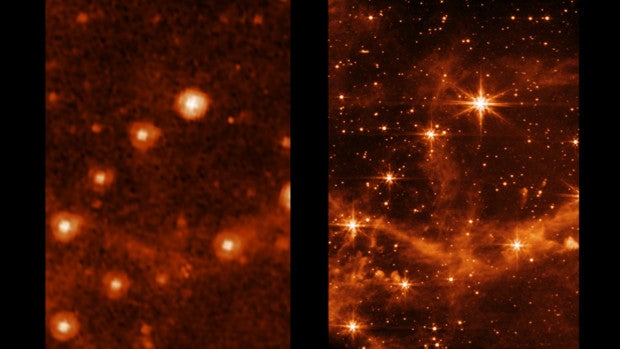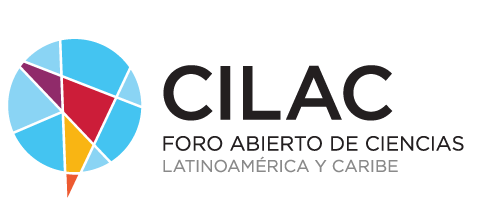 NASA's James Webb Space Telescope, launched last December, is now aligned with its four scientific instruments. One of them, the Mid-Infrared Resonance Imaging (MIRI), developed in collaboration with INTA (National Institute of Technology), can observe very cold and distant objects, which differentiates it from the veteran Hubble telescope. Its first test image is dazzling. It shows in unprecedented detail part of the Large Magellanic Cloud, a small satellite galaxy of our own, the Milky Way. Never before has it been seen with such clarity.
NASA's James Webb Space Telescope, launched last December, is now aligned with its four scientific instruments. One of them, the Mid-Infrared Resonance Imaging (MIRI), developed in collaboration with INTA (National Institute of Technology), can observe very cold and distant objects, which differentiates it from the veteran Hubble telescope. Its first test image is dazzling. It shows in unprecedented detail part of the Large Magellanic Cloud, a small satellite galaxy of our own, the Milky Way. Never before has it been seen with such clarity.
MIRI is designed to study protoplanetary disks and the molecules they contain, even before solar systems formed. It will help us understand how stars form their planetary systems. Its first image (at 7.7 microns) shows part of the Large Magellanic Cloud, which has served as a dense star field to test Webb's performance.
Just compare the foreground of the MIRI image with an earlier image of the same target taken with NASA's Spitzer Space Telescope's Infrared Array Camera (at 8.0 microns). The now-retired Spitzer was one of NASA's great observatories and the first to provide high-resolution images of the near- and mid-infrared universe. Webb, with its significantly larger primary mirror and improved detectors, will be able to see the infrared sky more clearly, enabling scientists to make even more discoveries.
For example, the MIRI image shows interstellar gas in unprecedented detail. It shows the emission of carbon and hydrogen molecules that play an important role in the thermal equilibrium and chemistry of interstellar gas. When Webb is ready to begin scientific observations, studies like these with MIRI will help astronomers better understand the birth of stars and protoplanetary systems.
Comprised of a camera, a spectrograph, and a coronagraph, MIRI observes objects that are colder and more distant (and therefore older) than the near-infrared. However, it requires a more powerful cooling system to operate at -210 degrees Celsius, so it has its own cryogenics system that acts as a kind of "refrigerator" to keep it cooler than the other instruments.
"A revolution"
"All the instruments are operating at the limits of their nominal capacity, or even better. They're ready to do science," David Barrado, Professor of Astrophysics Research at the INTA-CSIC Astrobiology Center, who has worked at MIR for twenty years, explains to this newspaper. "Given the resolution and sensitivity of these images, we can say that we're going to do extraordinary science that will break the barriers of knowledge we have now about the formation and evolution of stars, the development of planetary systems, the evolution of galaxies, cosmology... everything is going to be a revolution from now on," he asserts.
"A picture is worth a thousand words," he continues. "We're really looking forward to seeing the Hubble images and starting to receive data starting in July." He explains that the MIRI calibration process is going as expected. "The entire consortium is very happy with what we've achieved so far and with the data we expect," he says.
Meanwhile, Webb's team has begun the process of configuring and testing the instruments to begin scientific observations this summer.
